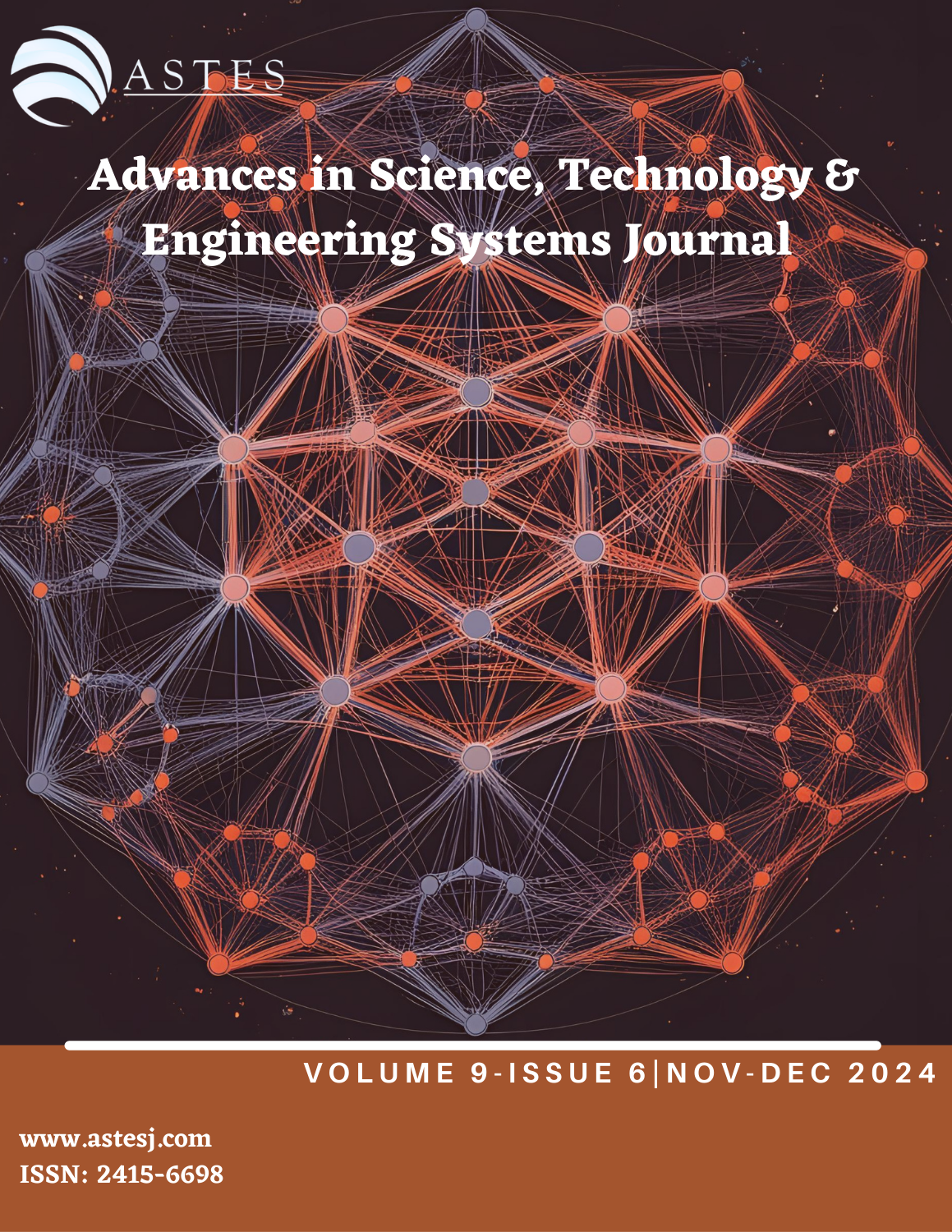Download Complete Issue
This issue shares four studies that show how smart technologies are helping to solve real-world problems in industry, healthcare, education, and AI security. One study uses machine learning to predict work time in factories more accurately, helping improve production planning. Another offers a smart camera-based system to detect falls in elderly people, using deep learning for safer elder care. In education, a card-based game called Value Karuta is introduced to teach business students the idea of customer value in a fun and effective way. Lastly, a study explores how compressed AI models can better resist cyberattacks, making AI systems more secure.
Editorial
Front Cover
Adv. Sci. Technol. Eng. Syst. J. 9(6), i-i, (2024);
Editorial Board
Adv. Sci. Technol. Eng. Syst. J. 9(6), ii-iii, (2024);
Editorial
Adv. Sci. Technol. Eng. Syst. J. 9(6), iv-v, (2024);
Table of Contents
Adv. Sci. Technol. Eng. Syst. J. 9(6), vi-vi, (2024);
Articles
Utilizing 3D models for the Prediction of Work Man-Hour in Complex Industrial Products using Machine Learning
Ahmet Emin Ünal, Halit Boyar, Burcu Kuleli Pak, Vehbi Çağrı Güngör
Adv. Sci. Technol. Eng. Syst. J. 9(6), 1-11 (2024);
View Description
The integration of machine learning techniques in industrial production has the potential to revolutionize traditional manufacturing processes. In this study, we examine the efficacy of gradient-boosting machine learning models, specifically focusing on feature engineering techniques, applied to a novel dataset with 3D product models pertaining to work moan-hours in metal sheet stamping projects, framed as a regression task. The results indicate that LightGBM and XGBoost surpass other models, and their effectiveness is further enhanced by employing feature selection and synthetic data generation methods. The optimized LightGBM model exhibited superior performance, achieving a MAPE score of 10.78%, which highlights the effectiveness of gradient boosting mechanisms in handling heterogeneous data sets typical in custom manufacturing. Additionally, we introduce a methodology that enables domain experts to observe and critique the results through explainable AI visualizations.
Advanced Fall Analysis for Elderly Monitoring Using Feature Fusion and CNN-LSTM: A Multi-Camera Approach
Win Pa Pa San, Myo Khaing
Adv. Sci. Technol. Eng. Syst. J. 9(6), 12-20 (2024);
View Description
As society ages, the imbalance between family caregivers and elderly individuals increases, leading to inadequate support for seniors in many regions. This situation has ignited interest in automatic health monitoring systems, particularly in fall detection, due to the significant health risks that falls pose to older adults. This research presents a vision-based fall detection system that employs computer vision and deep learning to improve elderly care. Traditional systems often struggle to accurately detect falls from various camera angles, as they typically rely on static assessments of body posture. To tackle this challenge, we implement a feature fusion strategy within a deep learning framework to enhance detection accuracy across diverse perspectives. The process begins by generating a Human Silhouette Image (HSI) through background subtraction. By combining silhouette images from two consecutive frames, we create a Silhouette History Image (SHI), which captures the shape features of the individual. Simultaneously, Dense Optical Flow (DOF) extracts motion features from the same frames, allowing us to merge these with the SHI for a comprehensive input image. This fused representation is then processed using a pre trained Convolutional Neural Network (CNN) to extract deep features. A Long Short-Term Memory (LSTM) Recurrent Neural Network (RNN) is subsequently trained on these features to recognize patterns indicative of fall events. Our approach’s effectiveness is validated through experiments on the UP-fall detection dataset, which includes 1,122 action videos and achieves an impressive 99% accuracy in fall detection.
Development and Application of Value Karuta to Understand Value in Lean Management: Initial Small-group Trial in Japan and the UK
Tamao Kobayashi, Koichi Murata
Adv. Sci. Technol. Eng. Syst. J. 9(6), 21-29 (2024);
View Description
This study proposes the Value Karuta (VK), an application of the traditional Japanese card game karuta. Its goal is to contribute to the understanding of value, which is the first principle of lean management. After stating the problems of lean management and the specifications of VK, this paper confirms the validity of the proposal by discussing two surveys. The first survey explored the utility factors of the cards themselves; it was conducted with a group of students and businesspeople in Japan. The second survey observed the actual situation in the game and was conducted in a group of academics at two UK universities. Both surveys used qualitative methods, such as observation and discussion, and quantitative questionnaires. The results confirm the role of VK as a fundamental tool addressing the need to understand customer value in lean management.
On Adversarial Robustness of Quantized Neural Networks Against Direct Attacks
Abhishek Shrestha, Jürgen Großmann
Adv. Sci. Technol. Eng. Syst. J. 9(6), 30-46 (2024);
View Description
Deep Neural Networks (DNNs) prove to be susceptible to synthetically generated samples, so-called adversarial examples. Such adversarial examples aim at generating misclassifications by specifically optimizing input data for a matching perturbation. With the increasing use of deep learning on embedded devices and the resulting use of quantization techniques to compress deep neural networks, it is critical to investigate the adversarial vulnerability of quantized neural networks.In this paper, we perform an in-depth study of the adversarial robustness of quantized networks against direct attacks, where adversarial examples are both generated and applied on the same network. Our experiments show that quantization makes models resilient to the generation of adversarial examples, even for attacks that demonstrate a high success rate, indicating that it offers some degree of robustness against these attacks. Additionally, we open-source Adversarial Neural Network Toolkit (ANNT) to support the replication of our results.

